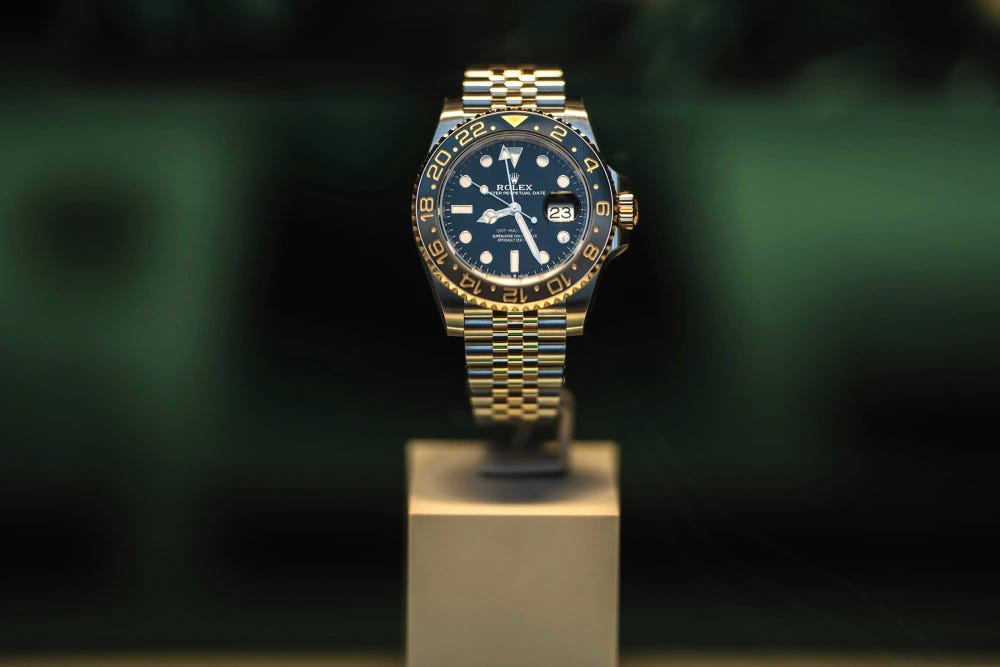LVMH Executives Optimistic as Luxury Watch and Jewelry Sales Rebound for 2025
After a challenging year, luxury watch and jewelry brands within LVMH are launching new collections, anticipating a strong year ahead.
NEW YORK — After experiencing a downturn in sales last year, LVMH’s watch and jewelry division has seen a promising recovery, with an uptick in sales for the final quarter of 2024 and continued growth into January. Several of the luxury conglomerate’s brand CEOs shared their optimism for 2025, bolstered by renewed demand, especially from American consumers.
During LVMH’s recent earnings call, the company revealed a 3% increase in sales for its watch and jewelry division, marking a turnaround after several quarters of decline. This growth was notable compared to the 1% drop in the company’s fashion and leather goods segment, as well as an 8% decline in its wine and spirits division.
At LVMH Watch Week in New York, brand leaders expressed confidence about the future. Jean-Christophe Babin, CEO of Bulgari, noted the strong start to the year, while Tiffany & Co. CEO Anthony Ledru pointed to renewed consumer confidence in the U.S. following the presidential election.
“Clarity in the market boosts consumer confidence, and that’s crucial for the luxury sector,” said Ledru, who believes the “feel-good factor” will continue to drive sales.
Despite this positive outlook, challenges remain. U.S. tariffs on Swiss-made watches and French luxury goods, imposed during the Trump administration, could create uncertainty for the industry. However, for now, the launch of new products across the LVMH portfolio reflects the industry’s hopeful outlook for 2025.
Louis Vuitton’s watch division introduced the "Tambour Taiko Spin Time" collection, featuring innovative “jumping cubes” inspired by old airport flap displays. Additionally, the Gérald Genta line unveiled the “Gentissima Oursin Fire Opal,” a striking piece made from 137 opal gems sourced from Mexican volcanoes.
Jean Arnault, director of Louis Vuitton watches, shared his long-term vision of establishing the brand as a top-tier watchmaker, known for high complications and fine craftsmanship. “It will likely take a generation for Louis Vuitton to be synonymous with watchmaking, but our focus is on ensuring that when they think of Louis Vuitton watches, they know they are getting exceptional quality,” he said.
TAG Heuer, another LVMH brand, has seen a surge in sales since its October announcement as the new official timekeeper for Formula 1, replacing Rolex. CEO Antoine Pin remarked on the immediate positive impact of the partnership, with strong social media reactions fueling excitement and brand visibility.
On the jewelry side, Tiffany & Co. saw a 9% increase in same-store sales during the fourth quarter, with its flagship store on Fifth Avenue experiencing strong foot traffic over the holiday season. The newly renovated store features a Blue Box Café and a VIP suite offering stunning views of Central Park, helping to elevate the brand’s high-end appeal.
Under LVMH’s ownership, Tiffany has shifted towards an upscale market, with Ledru highlighting the success of its “Hardware” collection, particularly its gold chain-link necklace priced at over $19,000. “We’ve redefined Tiffany’s market, attracting a clientele that demands exclusivity, quality, and high-end experiences,” Ledru said.
Bulgari, which has traditionally seen strong sales in China, is hopeful for a boost during the Chinese zodiac’s Year of the Snake. Despite the current challenges in the Chinese economy, CEO Babin is optimistic that government stimulus measures will help rebuild consumer confidence.
Babin also highlighted the growing influence of women in the luxury market, noting that women now account for a significant portion of jewelry sales, driven by increased purchasing power and independence. “Women’s buying power is now on par with men’s, and that’s a revolution for luxury,” he said.
While concerns about U.S. tariffs persist, LVMH’s executives remain adaptable, noting that luxury buyers are increasingly shopping across borders. With the strong dollar driving American tourists to Europe, wealthy U.S. customers may choose to purchase their luxury items abroad, where tariffs may not be as impactful.
As LVMH and its brands navigate the uncertainties of 2025, the focus remains on delivering high-quality products and exceptional customer experiences to maintain their leading position in the global luxury market.


